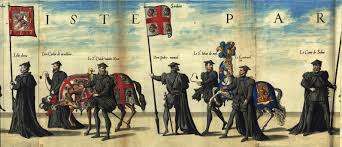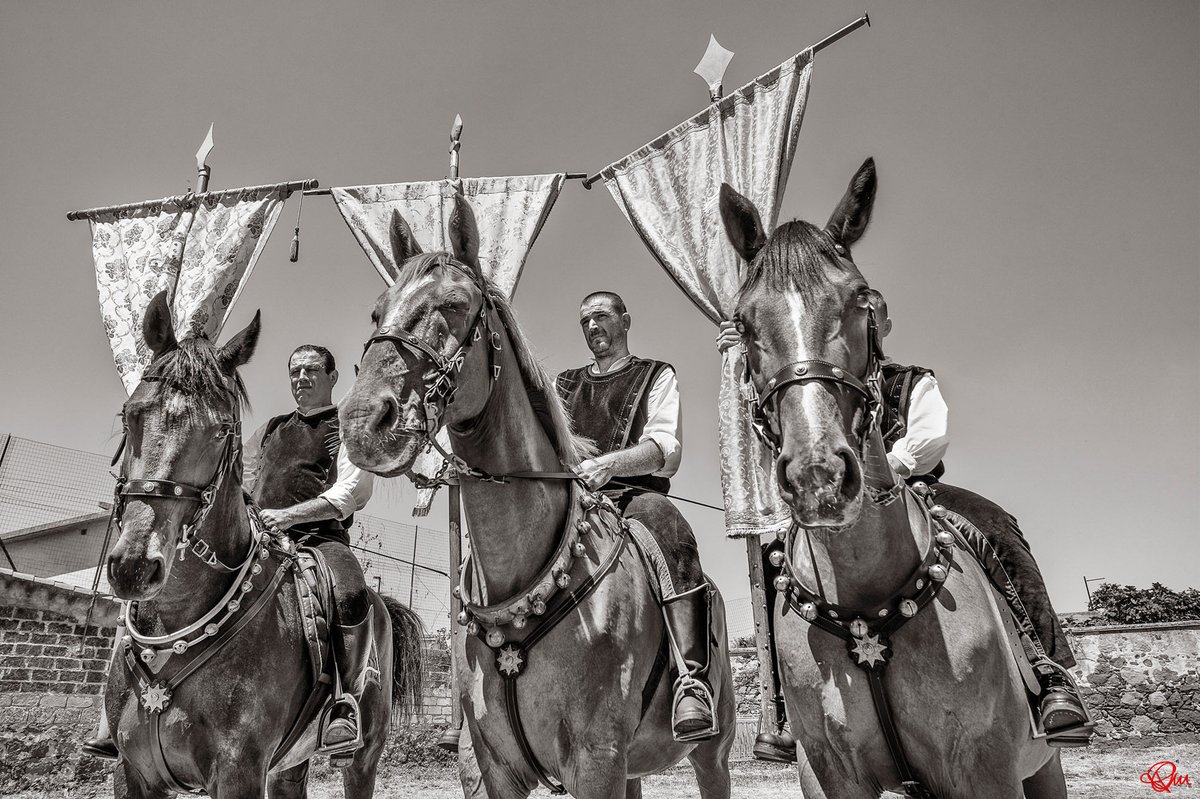
**Sardinian decorated BREAD**
Thread about the culture of bread in Sardinia.
📸 Pani pintau paraded during a festival
Thread about the culture of bread in Sardinia.
📸 Pani pintau paraded during a festival

In Sardinia, bread is the equivalent of a basic lunch. For most part of past centuries, bread was the only thing people could eat every day. When the shepherds left their homes for weeks or months, they solely ate bread and cheese.
Bread is the metaphor for everything that is-
Bread is the metaphor for everything that is-

-good, sacred, basic. Bread couldn't be thrown away and was eaten even if stale.
The large fields and plains of Sardinia, from Marmilla, Campidano and north Sardinia, made the cultivation of wheat very favourable, so much so that Sardinia was one of the Roman Empire's granaries.
The large fields and plains of Sardinia, from Marmilla, Campidano and north Sardinia, made the cultivation of wheat very favourable, so much so that Sardinia was one of the Roman Empire's granaries.

The tradition remained for all Middle Age and modern era. Wheat was the most common ingredient but other cereals could be used too, for less important bread.
The differentiation between the pastoral life of the people of central Sardinia and the farmers of the plains led to-
The differentiation between the pastoral life of the people of central Sardinia and the farmers of the plains led to-

-a differentiation in bread types. The southern areas see a larger production of civraxiu, bread with lots of crumb and made with mother yeast.
📸 Civraxiu from the Cagliaritano
📸 Civraxiu from the Cagliaritano

The mountainous areas see a prevalence of "biscuit bread", like the carasau which is done without yeast and doubly cooked in the oven so that it becomes crisp. The bread would swell inside the oven and the two faces were cut apart by women with knives. The two faces were- 

-cooked again, so that it could crisp.
It is very resistant to long travels and can last for months. That's why it was the typical bread of shepherds.
There are also some grey areas, with the production of flat bread with a little crumb, like in Desulo whose bread is famous.
It is very resistant to long travels and can last for months. That's why it was the typical bread of shepherds.
There are also some grey areas, with the production of flat bread with a little crumb, like in Desulo whose bread is famous.

The coccoi is widely spread and it is characterised by the numerous spikes made all around. It's a bread with soft crumb.
📸Coccoi from Aritzo and coccoi pintau from Atzara

📸Coccoi from Aritzo and coccoi pintau from Atzara


One of the oldest types of bread is the bread of acorns and clay. Yes, you read right, clay was eaten in bread. Few women know how to make it nowadays and it was done solely in Baunei, but was probably common in a larger area back then. Those who tried it said it was nice. 

Since nothing could be wasted, there are several types of stuffed bread, with olives, ricotta cheese, meat or tomatoes. The mustazzeddus of Iglesias are made with tomatoes while panadas could be done with lamb meat, eels or different fillings. In picture, those from Cuglieri. 



Bread has always had sacred meanings. It was used as offering already in the Nuragic Age and archaeologists found particular "stamps" (called pintaderas) used to imprint a motive or decor on the bread. 



Particular kinds of bread were/are still made to celebrate different occasions. They take their shapes and decors from the patient work of women who cut them with knives and other instruments.
Among these are many traditional breads dedicated to each Saint.


Among these are many traditional breads dedicated to each Saint.



We have for example the bread of Capudanne (new year), made with representations of the shepherds' work or a farm.
📸 Pattada
📸 Pattada

We have Easter bread, with eggs and the recurring motive of the hen, but also the Tree of Life. The representation of Lazarus (worms included) were also made during Holy Week.
📸 Tree of Life from Scano


📸 Tree of Life from Scano



We have marriage bread, made with flowery motives, sometimes as high as a tower with the figures of the newlyweds. Bread is a central part in the rites of marriage, where it is brought around during the parade and hanged on the bedroom of the new couple.
📸Paulilatino, Tramatza


📸Paulilatino, Tramatza



This is a corona (crown), used for different occasions, included marriage. It was the one hanged on the wall until it fell down by itself.
📸 Scano di Montiferru
📸 Scano di Montiferru

This is the bread of Santu Juanne, made in Fonni in occasion of the festival which includes a horse race. 

There were also breads made to entertain kids, like these pippias, made for girls. They could also be shaped after objects. 

• • •
Missing some Tweet in this thread? You can try to
force a refresh











